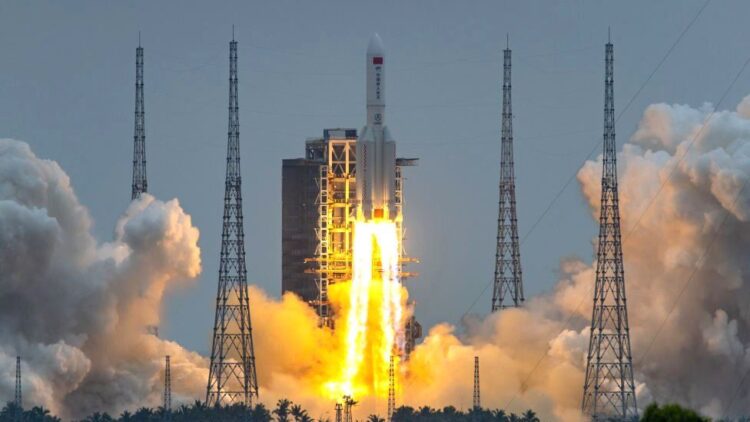By Charlie Carmichael-
Chinese rocket used to build its space station has crashed back to Earth. It reentered the atmosphere at 10.01 utc – but at least some of it is expected to have survived to hit the surface and no one yet knows where it has landed.
On Monday, China launched its Long March-5B rocket to carry the final module to its Tiangong space station, which is now complete. The rocket’s booster, which weighs 22,000 tonnes and is 16 metres long, has spent the past week drifting back towards Earth.
At least some of the rocket has a chance of making it to the ground with the initial predicted area – before it had reentered the atmosphere – where it might come down covering a region containing 88 per cent of the world’s population, according to the Aerospace Corporation (AC), an American non-profit group that produces technical guidance for the aerospace industry.
The booster’s rapid speed of almost 30,000 kilometres per hour means that its exact time of reentry affects where it will come down, with a few seconds changing where it will hit by tens of kilometres. An impact location hasn’t ye
A Chinese foreign ministry spokesperson told the New York Times that the probability of causing harm to aviation activities or people on the ground was low, and that “China has always carried out activities in the peaceful use of outer space in accordance with international law and international practice – re-entry of the last stage of a rocket is an international practice”.
Read more: China prepares to launch laboratory module to Tiangong space station
Previous Chinese rocket launches have landed in unexpected locations: the first Long March-5B rocket launch appeared to scatter debris over villages in the Ivory Coast in May 2020, while another Long March-5B used to launch another space station module landed in water near the Philippines and Malaysia in July 2020.
However, the risk to the public is near zero if you live in the same latitude as Europe or Russia, as well as Asia or South America given the last two orbits of the booster. People outside these regions have a non-zero chance of being hit, but the chances are still incredibly small –more than 1 in 10 trillion.After a long hiatus, SpaceX’s enormous Falcon Heavy rocket has launched for the fourth time, carrying two secretive satellites from the US Space Force into high orbits




